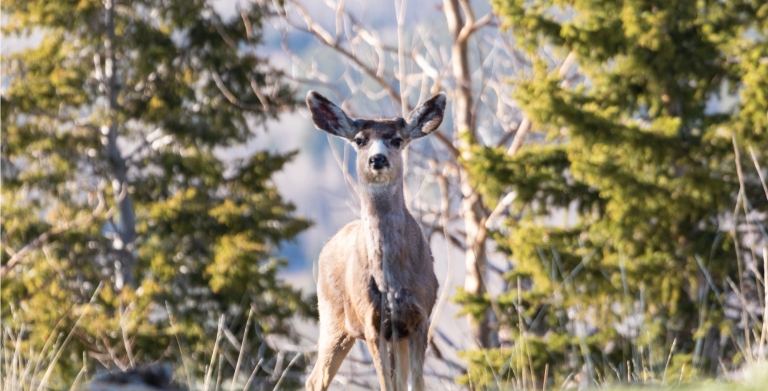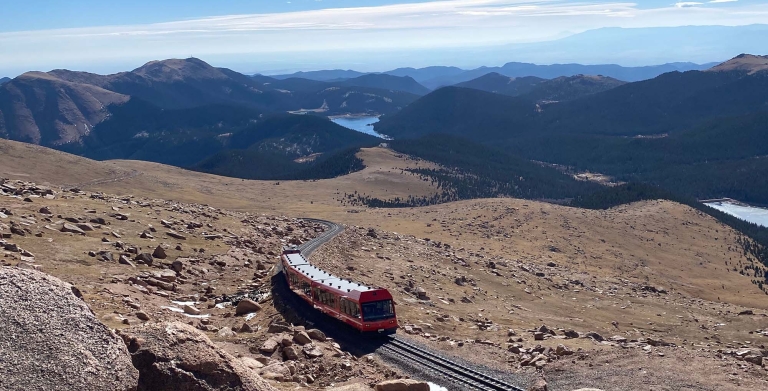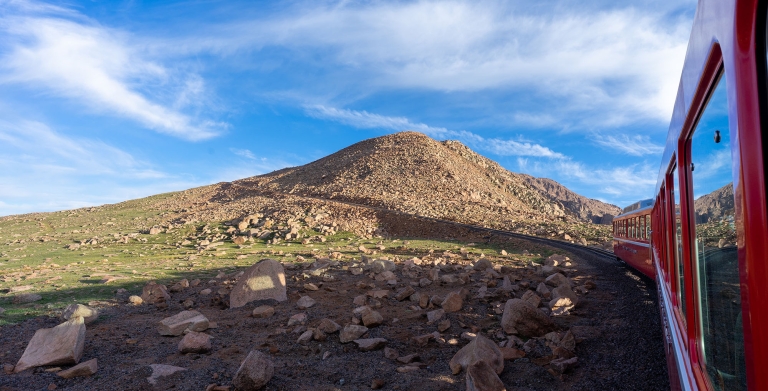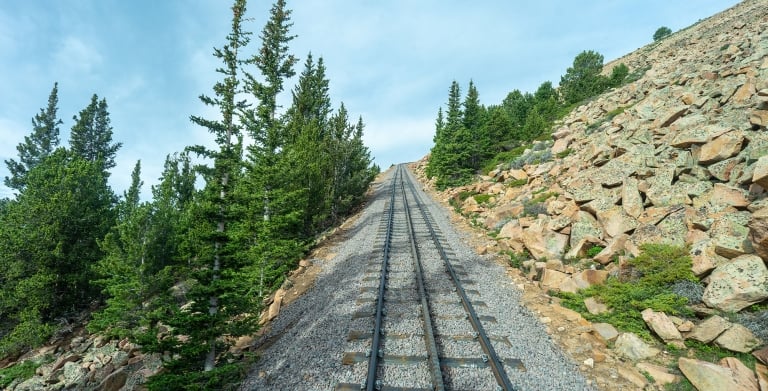The Peak of Adventure




Before you even reach the Depot (at 6,571 feet), you might see the wildflowers and grasslands of the Eastern Plains Zone, which extends up to 6,000 feet and is home to many small animals like prairie dogs and rabbits.
Next up, you’ll spot the small bushes and trees of the Foothills Zone 6,000 to 8,000 feet up, where raccoons, various squirrels, deer, and an occasional bear or mountain lion mingle among scrub oak, juniper, sagebrush, and pinyon pine.
In the Montane Zone from 8,000 to 10,000 feet, you’ll still spy various wildflowers and small shrubs but it’s the large forests of pines, Douglas fir, and colorful aspen trees that really shine here. Watch for deer, elk, bear, and mountain lions in this zone.
Dense forests of Engelmann spruce, Douglas fir, and one of the oldest living species of trees, the Bristlecone pine, characterize the less hospitable Subalpine Zone from 10,000 to 11,500 feet. Estimates put some Bristlecone pine trees on Pikes Peak at more than 2,000 years old. In this zone, you really start to see the effects of altitude and lack of water on the natural surroundings. Watch for chipmunks, snowshoe hares, or pine squirrels at this altitude.
Beginning at about mile six as the treeline fades, in the tundra of the Alpine Zone at 11,500 feet and above, tiny flowers, mosses and lichen eke out a cold existence in the short growing season in this unforgiving environment. This windy zone is home to the magnificent bighorn sheep, one of Colorado’s largest bighorn sheep herds in fact. These beautiful animals migrate to lower, more hospitable regions in colder months. The playful yellow-bellied marmot is the most common animal on Pikes Peak, otherwise known as “whistling marmots” or “whistle pigs” because of their piercing whistle that alerts others of danger. Watch for them sunning themselves on a rock in the summer.



